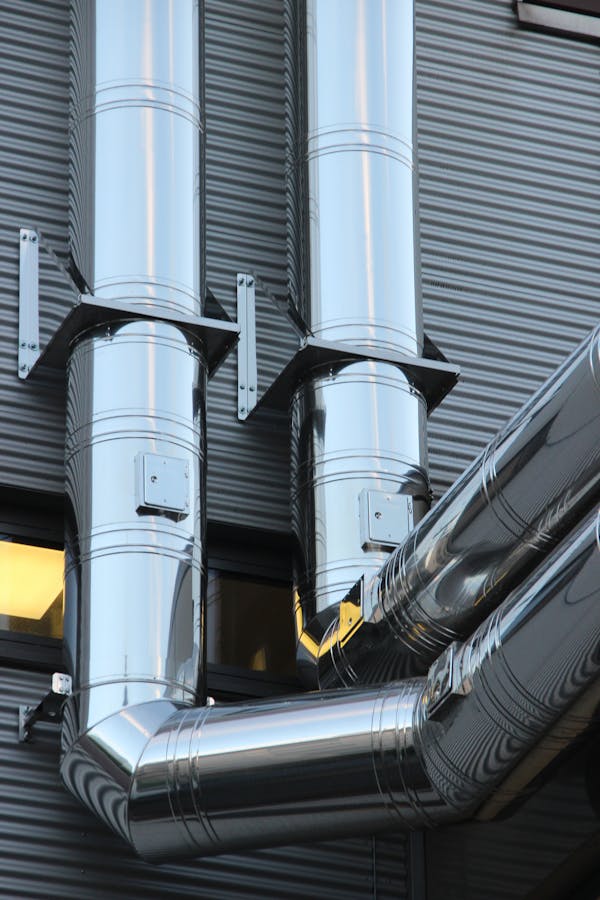Oil pipelines form the backbone of petroleum transport, linking refineries, storage sites, and terminals safely and efficiently. Advancements in materials, monitoring technologies, and engineering practices now enhance their durability and operational performance, reducing risks and environmental impact. Understanding these innovations offers insight into how the UK’s complex pipeline networks sustain energy demands while adapting to modern challenges.
Essential overview of oil pipelines: definition, function, and the UK’s petroleum pipeline network
To understand how vallourec designs its oil pipeline solutions, it is useful first to clarify the fundamental role of oil pipelines in energy infrastructure. Oil pipelines are robust, underground conduits engineered for the long-distance movement of crude oil or refined petroleum products, reliably connecting production sites, refineries, and market depots. Distinctly, crude oil pipelines transport raw, unrefined oil, while product pipelines distribute refined substances such as petrol, diesel, or jet fuel. The crude transport system underpins modern economies by supplying essential energy swiftly and safely across vast areas.
Also read : How Do UK Businesses Successfully Navigate Economic Uncertainty?
In the United Kingdom, the petroleum distribution network branches into three principal pipeline systems: the Exolum Pipeline System (formerly GPSS), Esso pipelines, and United Kingdom Oil Pipelines (UKOP). These interconnected networks form the backbone of the UK pipeline network, channeling multiple product grades to energy hubs, from refineries and offshore terminals to major urban zones. A glance at any pipeline routes map reveals a strategic lattice of connections vital for fuel supply chains and oil and gas transmission nationally. Robust steel construction, advanced coatings, and routine monitoring keep these arteries efficient, minimizing leaks while optimizing capacity and delivery times.
Construction, Operation, and Technologies in Modern Oil Pipelines
Technical construction methods and materials for pipeline durability
Steel pipes remain the backbone of oil pipeline construction, chosen for strength and reliability. External coatings and cathodic protection shield pipelines from corrosion, while additives like polyethylene oxides are used internally to limit drag and reduce wear. Subsurface engineering, involving careful surveying and trenchless technologies, enables the installation of pipes under rivers and urban infrastructure with minimal disruption. Offshore pipelines, which link wells to coastal terminals, face unique design challenges due to wave action and require advanced routing and anchoring solutions. Polyethylene and specialized linings are used in segments where extra chemical resistance or flexibility is essential, particularly in gas and product lines.
Also read : Top strategies to enhance oil pipeline efficiency and longevity
Operational practices including flow measurement, batching, and pigging technology
Pipeline flow measurement is critical for managing delivery and compliance. Tools such as flow meters and Supervisory Control and Data Acquisition (SCADA) systems track throughput and detect anomalies in real time. Batching enables safe transport of multiple products, where physical devices called “pigs” separate product types and assist in cleaning. In both crude and product pipelines, pigging is vital for both maintenance and efficiency enhancements, preventing residue buildup and optimizing throughput.
Inspection, maintenance, and the role of advanced monitoring systems in ensuring pipeline integrity
Inspection technology like smart pigs and aerial surveillance ensures that potential weaknesses—cracks, corrosion, dents—are identified early. SCADA and computational pipeline monitoring offer rapid leak detection, enhancing emergency response and environmental protection. Maintenance practices—such as regular pigging, intelligent monitoring, and prompt repair of weak sections—not only meet stringent safety standards but also help extend the pipeline’s service life and safeguard both asset value and communities.
Safety standards, environmental protection, and risk management in oil pipelines
Key safety protocols and regulatory frameworks governing UK and international pipelines
Precision: UK pipelines, such as those overseen by the British Pipeline Agency and subject to national and international standards, employ robust protocols. Regulatory frameworks—like those established by the Pipeline Safety Regulations (PSR) 1996—demand thorough risk assessments, frequent inspections, and clearly defined operational procedures. These include rigorous documentation, control of pipeline pressure, corrosion prevention, and mandated leak detection systems.
Internationally, frameworks echo such practices. Operators must demonstrate compliance with recognized safety management systems and keep detailed incident records. Regulatory bodies frequently audit adherence to standards that focus on both occupational safety and integrity management, ensuring that pipeline infrastructure meets lifecycle and construction requirements.
Environmental concerns and case studies of pipeline incidents and mitigation strategies
Pipeline environmental impact can be significant. Major incidents—such as the 2010 Michigan oil spill—have led to improvements in spill response and risk mitigation, including rapid deployment of containment measures and comprehensive cleanup protocols. Operators now incorporate environmental assessments at planning stages and routinely monitor potential impacts on groundwater and ecosystems, integrating learnings from past events to support incident prevention.
Advanced leak detection, response measures, and technology for minimizing risk
Modern pipeline leak prevention technology encompasses both continuous internal monitoring (using computational systems) and external surveillance like aerial patrols. Sophisticated leak detection methods—ranging from computational pipeline monitoring to fiber optic sensors—enable operators to quickly identify anomalies. Emergency response plans are regularly updated and tested, pairing real-time data with coordinated action to reduce escalation and safeguard both communities and the environment.
Innovations, ongoing developments, and challenges in pipeline systems
Recent and ongoing UK and global pipeline projects and network expansions
The UK pipeline network continues to develop through major system upgrades and targeted expansions. The Exolum Pipeline System (previously GPSS), Esso lines, and UKOP form the backbone of the country’s petroleum distribution, moving millions of tonnes of products each year. Newer projects often focus on pipeline infrastructure development and network expansion, using modern materials and monitoring for greater durability. Globally, cross-border energy corridor projects connect refineries, depots, and ports to optimize regional supply chains.
Integration of new technologies for improving efficiency and reducing environmental impact
Innovators are introducing advanced oil flow monitoring, smart pigging tools, and SCADA-based pipeline management practices to track and adjust flow, prevent leaks, and ensure swift responses to faults. Companies like Vallourec refine line pipes with coatings and drag-reducing internal additives. These steps help to mitigate pipeline ecosystem impacts while boosting energy logistics planning and reducing carbon footprints.
Current challenges, including security, route planning, and strategic trends
Pipeline security protocols are tightening, backed by surveillance, rapid response, and digital network integration to thwart sabotage and theft. Pipeline route optimization weighs environmental concerns, construction safety, and cost, reflecting increasing scrutiny from regulators and the public. Looking ahead, resilience, automation, and greener operation underpin strategic trends shaping the future of oil pipeline logistics and network expansion.




